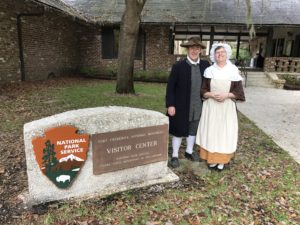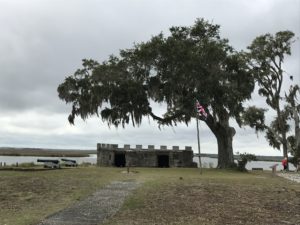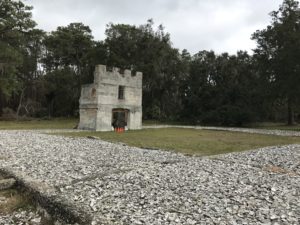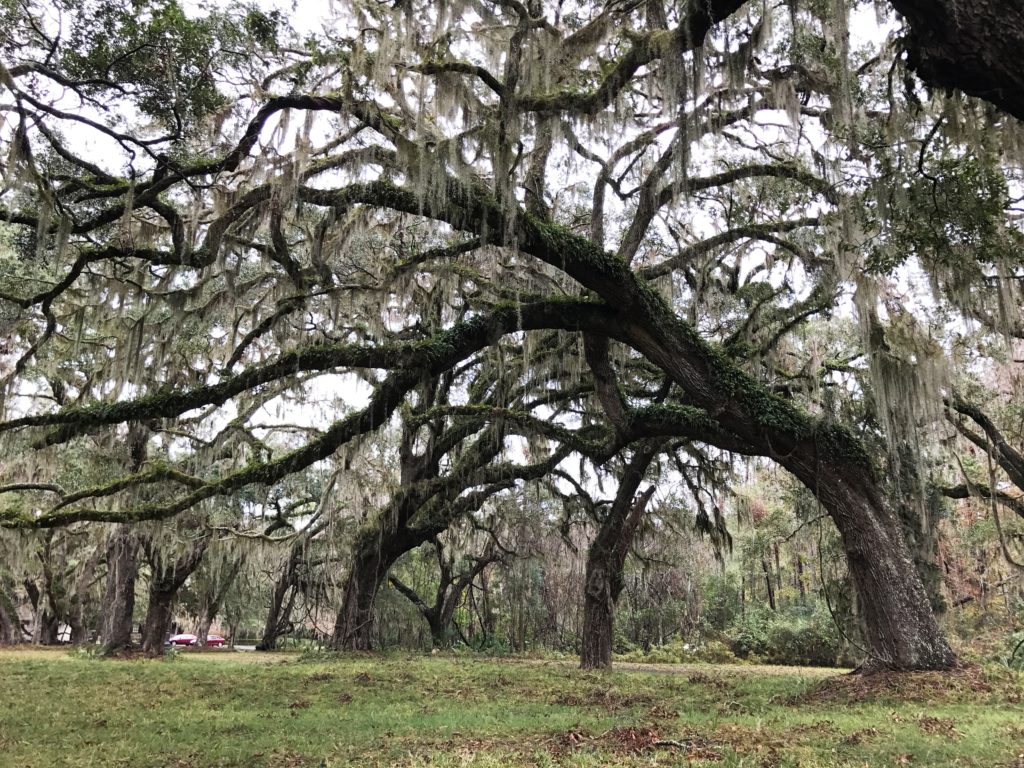 Tom and I will be working at Fort Frederica National Monument through April, so I will be writing about different aspects of the park over the next few months. Today I thought I would start with an introduction about Fort Frederica itself.
Tom and I will be working at Fort Frederica National Monument through April, so I will be writing about different aspects of the park over the next few months. Today I thought I would start with an introduction about Fort Frederica itself.
James Oglethorpe and a group of Trustees settled Georgia with “worthy poor” from England’s debtors prisons. They believed these poor people deserved a chance at a new life. Oglethorpe recruited settlers for Georgia out of the prisons. The first group of settlers came to Georgia in 1732 and established Savannah. After a couple of years, Oglethorpe returned to England for a second group of settlers. These settlers were more carefully recruited, based on the skills needed in the new colony.
This second group of settlers became the townspeople of Fort Frederica in 1736. Fort Frederica was the southern-most town in the colonies, charged with protecting the southern border from the Spanish. Spain had control of Florida and Britain had control of South Carolina. The land in between was called the “debatable land” because both countries claimed it. Oglethorpe, in command of the 42nd Regiment of Foot, planned to settle this debatable land for Great Britain.

Oglethorpe negotiated with the band of Creek Indians who controlled the land. Thanks to a native interpreter, Mary Musgrove, Oglethorpe had a very good relationship with the band. Tomochichi, the Creek chief over the area, ceded all of St. Simons Island to Oglethorpe. Forty-four men and 72 women and children were the first to settle the island. All of the men were soldiers or tradespeople. Each family received a 60 by 90 foot lot in town for a house and garden and 50 acres of land outside the town walls for crops. Soldiers built the fort and walls around the town to protect against the Spanish.

Fort Frederica had a short life as a town and by 1758 it was abandoned. St. Simons Island moved on to the plantation era. The townsite has been a national monument since 1945. The land was bought and protected by the Colonial Dames of America who gave it to the National Park Service. Only a little bit of the fort remains standing but extensive archaeological excavation allows us to know where the buildings were and journals and publications of the first settlers tells us who lived in what home.
Even though the town didn’t last long, its short history was full of drama. What kind of drama? Did the Spanish attack? Why was the town abandoned? This post is only the introduction to the town. Those are questions I will answer on other days.

